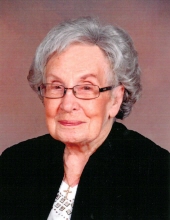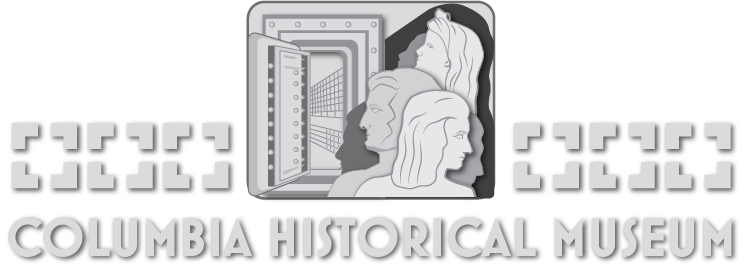![]()
By Beth Griggs
Columbia and Marion were first established as towns in the Brazos Precinct of Austin’s Colony, Department of Texas, State of Coahuila, Mexico. By 1834, this was the municipality of Columbia, Department of Brazos, State of Coahuila and Texas. For some time the Texans had become more and more dissatisfied with the rule of the Mexican Government. Columbia was the scene of several meetings held to express this discontent. On June 28, 1835, a group of citizens met at Columbia, and as an outgrowth of this meeting, the Committee on Resolutions recommended organization of a militia, appointment of a committee of public safety and correspondence, and a provisional government for Texas. Several other meetings were held including the one December 25, 1835, that recommended declaration of independence from Mexico.
Texas declared independence from Mexico on March 2, 1836, at Washington on the Brazos, and much fighting followed. When news was received that Gen. Sam Houston was retreating and Gen. Santa Anna was approaching, the citizens of Columbia panicked and joined other citizens of the area in a mass exodus known as the “Runaway Scrape.” They scattered in various directions. Some headed for the Louisiana border, some went by schooner to Galveston, and some went to Richmond. All in all the town was largely evacuated when Gen. Urrea arrived, so he did not damage the town. It has been speculated that if Santa Anna had marched through Columbia, he would have burned it.
The ad interim government, formed at Washington on the Brazos with David G. Burnet as president, and Lorenzo de Zavala as vice president, became a government on the move, in an attempt to escape the approaching Mexican army. It moved from Harrisburg to Galveston, then to Velasco, and found it necessary to move again because of lack of facilities. On July 23, President Burnet called for an election to be held in September, at which time officials for the first regular administration of the Republic of Texas would be elected, and he named Columbia as the new capital.
The thriving trade from the river port, and the additional facilities built while it was the seat of the courts, had caused much growth in Columbia. One of the few hotels in the area was found in Columbia, as well as a number of rooming houses—Polley’s Rooming House, a tavern run by Fitchett and Gill for Josiah H. Bell, and a boarding house operated by Rachel Carson and Ammon Underwood at Bell’s Landing—to name a few. At this time, Columbia offered more space available than any other town in Texas, with the possible exception of Nacogdoches. Another very important factor in the choice of Columbia as capital was the fact that the Telegraph and Texas Register was located in Columbia.
Five merchants, W.C. White & Co., Fitchett & Gill, Jacob Eberly, George Brown and G. & T.H. Borden, agreed to secure enough rooms to house the government, and offered the following rooms for its use:
- Store house formerly occupied by W.C. White with five rooms
- House formerly occupied by Jeremiah C. Cole
- Old Alcalde office with fireplace
- Mrs. William H. Sledge one room with stove
- Samuel W. Peebles two rooms with stoves
- House of William Beard’s 20 feet square with stove
- Mr. L. Sampler house with two rooms and fireplace
- William S. Hendricks’ two rooms with two fireplaces
- Mrs. Catherine J. Carson room with stove
- Col. Jacob Eberly’s two rooms
- All the chairs and tables necessary for both houses of Congress
Obviously, there was no single building large enough to hold the entire government. Two buildings served primarily to house the Congress and offices of the officials, and a number of smaller log houses were used as offices and committee rooms. A.P. McCormick writes that the president most often used a log cabin known as the office in the yard of Josiah H. Bell’s home.
One building in which Congress met was built by Capt. Henry S. Brown in 1832 and served as his family residence until his death in 1834. This was a two-story building located on the south side of Brazos Avenue, containing two rooms below and two above, separated by a large hallway, with an ell to the back. After Capt. Brown’s death the building was occupied by the firm of W.C. White and Company, composed of Walter C. White and James Knight. This building was destroyed in 1888.
The other building which housed Congress was a store built by Leman Kelsey in about 1833. It stood on the north side of Brazos Avenue, almost across the street from the Brown house. One body of Congress met in the large central room, and Stephen F. Austin had his office in the shed room at the back. There has been some controversy and contradictory information as to which branch met there. This Kelsey building is the one referred to by old timers in the area as the “old capitol” and it is the one generally pictured in history books. The fact that its central room was larger than those in the Brown house lends credence to the fact that the House of Representatives met there, and this is so stated by Mr. John Adriance, an early settler who lived at Columbia in the days of the Republic. He referred to the Kelsey building as the “old capitol” and to the Brown House as the senate building.
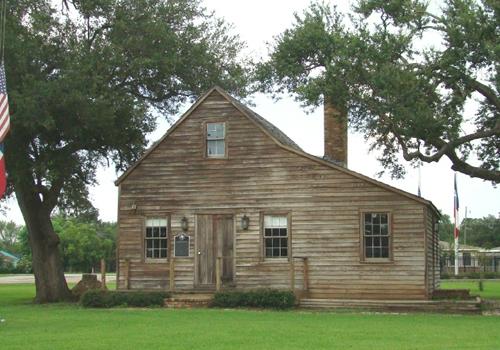
The replica of the Kelsey building where government officials of the new Republic of Texas gathered in 1836 sits next to the American Legion Hall in West Columbia behind Prosperity Bank. The original building was located where Walgreens is now.
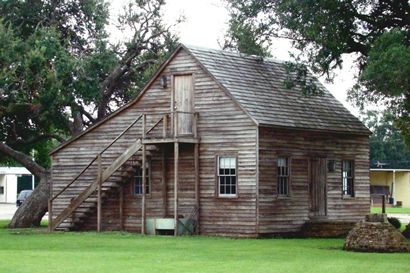
A rear view of the replica of the first capitol building of the Republic of Texas as it appeared in 1836-37 when Columbia was the capitol
The Kelsey building was destroyed by a storm in 1900. A historical marker was placed on the site of the building April 21, 1932. A replica of this building was constructed on a nearby site in 1977, and was dedicated by Gov. Dolph Briscoe.
There was a great influx of people when the government officials arrived. The ad interim cabinet, the newly elected officials, the judiciary, and the army and navy looking for back pay, the great, the near great and the hangers on, all gathered. Francis Lubbock described it this way: “This is the capitol of a republic, with the heads of departments, the Congress in session, and hosts of people in town. President, judges, representatives, captains, generals, men of mark, men that would attract attention and respect in any country.”
There were so many people that there was not enough room for all of them to find sleeping space. A bed space sold for about 50 cents. A man could pay for a bed space or pallet space; or if he craved privacy, he must pay for all the bed spaces to have the room alone. Those who could not find rooms rolled up in bedrolls and slept under the trees, taking their melas at the hotel.

The election had been called to deal with election of officials, and ratification of the constitution. Sam Houston was elected president, Mirabeau B. Lamar vice president, and Stephen F. Austin was selected secretary of state. Under Mexico, Texas had been divided into municipalities, which became counties under the Republic of Texas. Twenty-nine representatives and fourteen senators were chosen, and this first duly elected Congress of the Republic met at Columbia, October 3, 1836. Each house organized itself, with Ira Ingram being elected speaker of the house, and Richard Ellis selected as president of the senate.
Ad interim Vice President de Zavala became ill and resigned October 21, 1836, which precipitated Burnet’s resignation on the following day. The legislature voted to inaugurate the newly elected officials sooner than planned “at four o’clock this day.” In as much as the inauguration was rushed up, Houston’s speech was somewhat impromptu, but he was equal to the occasion, delivering a stirring speech. He unbuckled his sword, the emblem of his past office, and with tremendous emotion, presented it, stating: “I have worn it with some humble pretensions, in defense of my country, and should the danger of my country again call for my services, I expect to resume it and respond to that call, if needful, with my blood and my life.”

The new republic had many problems. It had a tremendous debt of one and a quarter million dollars, no credit and no resources except land. The Indians were troublesome, the army was needed to repel invasions and the navy to defend the coast, yet both the army and navy were unpaid and looking for pensions and payment.
There was a pressing question as to what should be done with Santa Anna. He had been kept at Velasco from June 9-15, guarded by Captain Patton, and was then brought on the Laura to Patton’s home (now the Varner-Hogg State Park) where he was kept at the “Race House” for a short period of time. He was then taken to Orozimbo Plantation, the home of Dr. James A.E. Phelps, where he was kept until he was released.
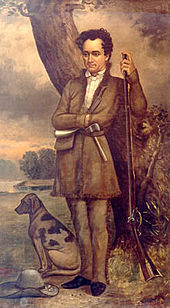
Stephen F. Austin was in ill health, bot so dedicated to Texas that he worked long hours, often into the night, in an unheated room. He caught cold which led to pneumonia and his death at the home of Judge George B. McKinstry in Columbia on December 27, 1836. His last thought and words were of Texas. Austin lay in state at the capitol until December 29, when his body was escorted by a procession of his colleagues, the president and cabinet, to Bell’s Landing. His body was then carried down the Brazos River on the Yellowstone to Peach Point, the home of his sister. There his body was met by an honor guard of the First Regiment and interred at Peach Point with military honors.
The first Congress accomplished much. They ratified the constitution, appointed committees, provided for the army and navy, protection from the Indians, created a judiciary, a postal department, a land office and established a financial system.
Housing continued to be a problem. The committee of merchants did not provide all the space promised, and the government officials found themselves cramped and without sufficient space. Perhaps the committee did not realize how many people would come, perhaps it was because the merchants and citizens themselves were expected to furnish the rooms without remuneration, or perhaps the story is true that Josiah H. Bell himself discouraged providing sufficient space because he feared that much crowding would prevent his hogs from running loose. Whatever the reasons, there was not enough space provided, so the Congress voted to move the capital to Houston in 1837.
After the government moved, Columbia declined and Marion (Bell’s Landing) became the more prosperous town. It also became known as Columbia, and the former Columbia became known as West Columbia after 1840. The river town continued to be called Columbia, or sometimes East Columbia, until the end of the century. In 1924 the Post Office officially listed the town as East Columbia, late Columbia. The interchange of names has been somewhat confusing, but the twin cities have now settled on the simple designations of West Columbia and East Columbia.
